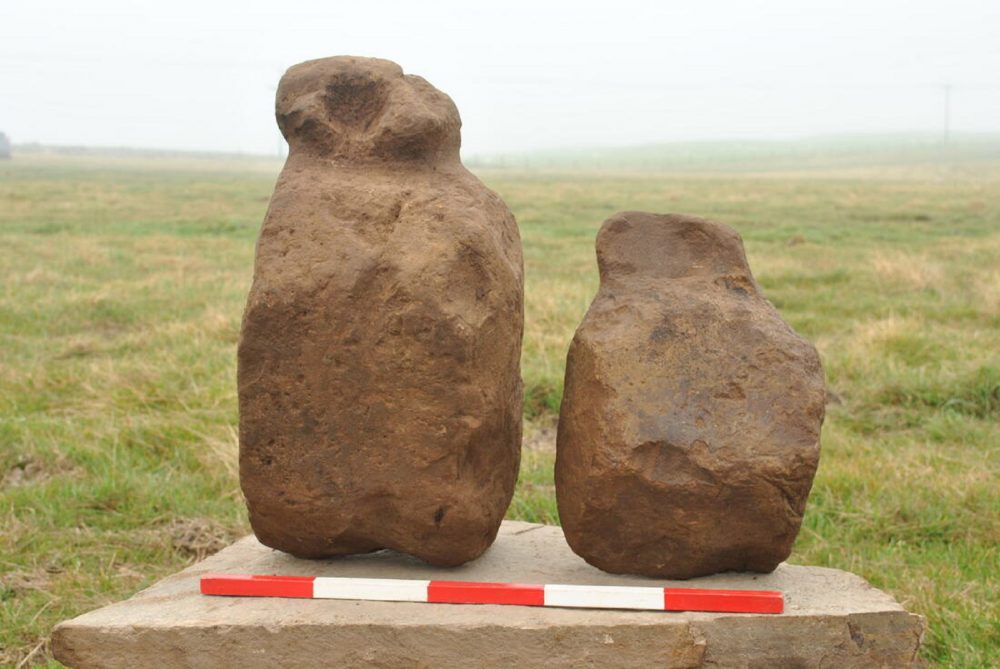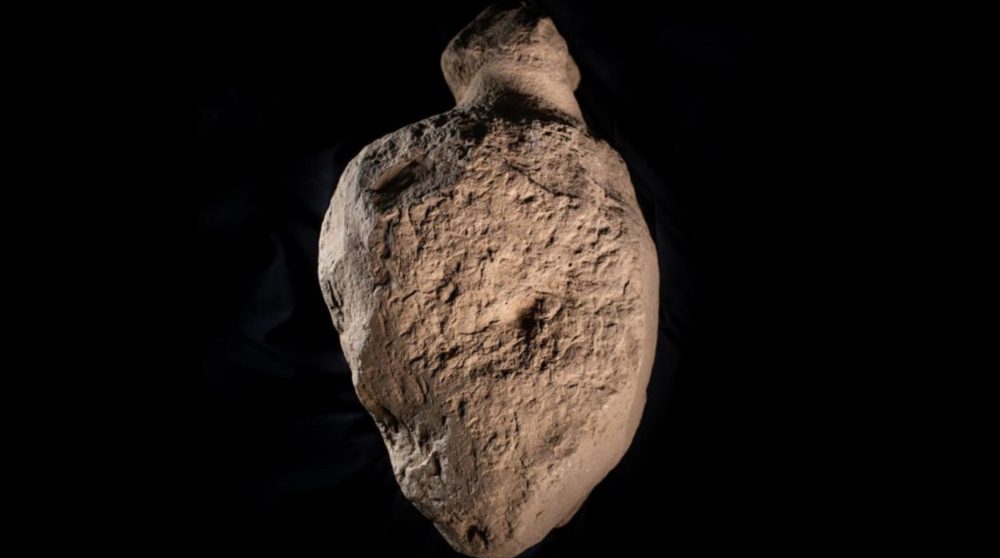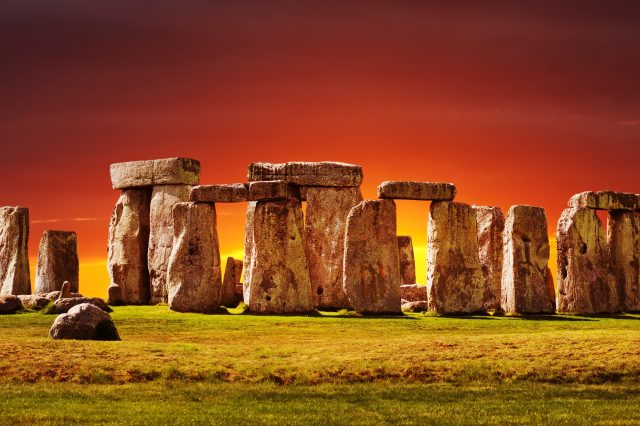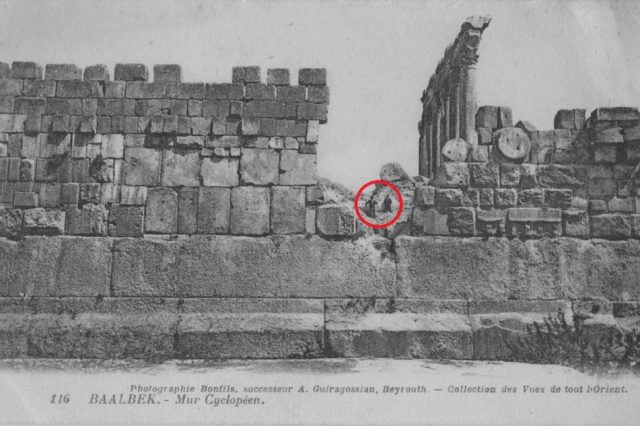In total, archaeologists have recovered nine mysterious stones that resemble humans.
Nine enigmatic stones, believed to be at least 4,000 years old, have been excavated in Scotland. According to experts, the enigmatic stones were carved to resemble a human’s shape. The world of archaeology is truly a fascinating one. Not only do experts delve into the mysteries of the ancient world, ancient civilizations, and perhaps even human origins, but from time to time, they make stumping and unexpected discoveries proving that archaeology is anything but boring. A team of archeologists has come across nine strange carved stones thought to have been crafted around 4,00 years ago.
Human-ish stones
The artifacts were discovered on the Island of Mainising in Scotland, in settlement of Finstown, and the strange part is: they resemble humans. The rocks are shaped, having long bodies, necks, and distinctive heads. The stones, measuring around 0.5 meters (1.6 ft), were recovered from within a box-shaped burial structure. The mysterious objects were discovered by chance as experts explored an area designated for an electrical substation. Their survey of the area revealed a single stone structure that they would call Finstown Fella, reports Live Science. A further survey of the area revealed the Finstown Fella was not alone, as experts recovered eight other stone figures.

Although it remains unclear what the exact purpose of the structures was, researchers claim that the stone-carved objects were of great importance, enough that they were incorporated inside the box-shaped burials. Archeologists are unsure whether or not the stone figures, believed to date back at least 4,000 years, were deliberately shaped to resemble humans or whether they were crafted that way for an entirely different purpose.
Familiar forms
As revealed by the BBC, the stones were carved into a familiar form featuring a head, shoulders, and body with a technique known as pecking, which involves chipping the stones using a pointed and much stronger tool. Some recently uncovered figures greatly resemble the human body, while other figurines seem flat and look more like upright stones used as weights. It is believed that those “weights” may have helped anchor ropes that helped hole the roof of ancient buildings. “It is very rare to find representations of people in prehistoric Orkney, and when found, they are usually individual or in very small groups,” Colin Richards, from the University of the Highlands and Islands Archaeology Institute, revealed in the statement.
The stones tell a story
“Finding nine figures within one structure is very exciting if they are figurines.” Evidence of the age of the stones was confined after the archeologists discovered evidence that the region’s ancient inhabitants worked the land at least 4,000 years ago. While exploring a nearby trench, the researchers discovered cross-cross marks most likely produced by ards or prehistoric plows. “This collaborative project with SSEN gives us the opportunity to examine an important prehistoric site that would otherwise not have been excavated.
Understanding their purpose
The exploratory trenches are now recorded and covered, while the significant artifacts are cleaned and stored for future study. Discussions will take place on the next steps for the development,” revealed Pete Higgins, ORCA Archaeology Project Manager. To better understand the exact purpose, meaning, and definitive age of the stones, archaeologists will be tasked with a series of future investigations where researchers will look for abrasion, wear, and any other potential marks that may be present on the anthropomorphic objects. Whatever the case, it is a unique discovery that sheds light on the region’s history and its ancient inhabitants.
Have something to add? Visit Curiosmos on Facebook. Join the discussion in our mobile Telegram group





